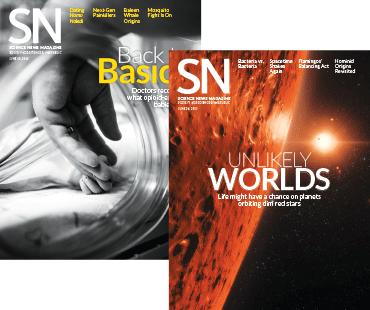Readers question hominid family tree
Your comments and letters on the June 10 and June 24, 2017, issue of Science News
 Hominid hubbub
Hominid hubbub
In “Hominid roots may go back to Europe” (SN: 6/24/17, p. 9), Bruce Bower reported that the teeth of Graecopithecus, a chimp-sized primate that lived in southeastern Europe 7 million years ago, suggest it was a member of the human evolutionary family.